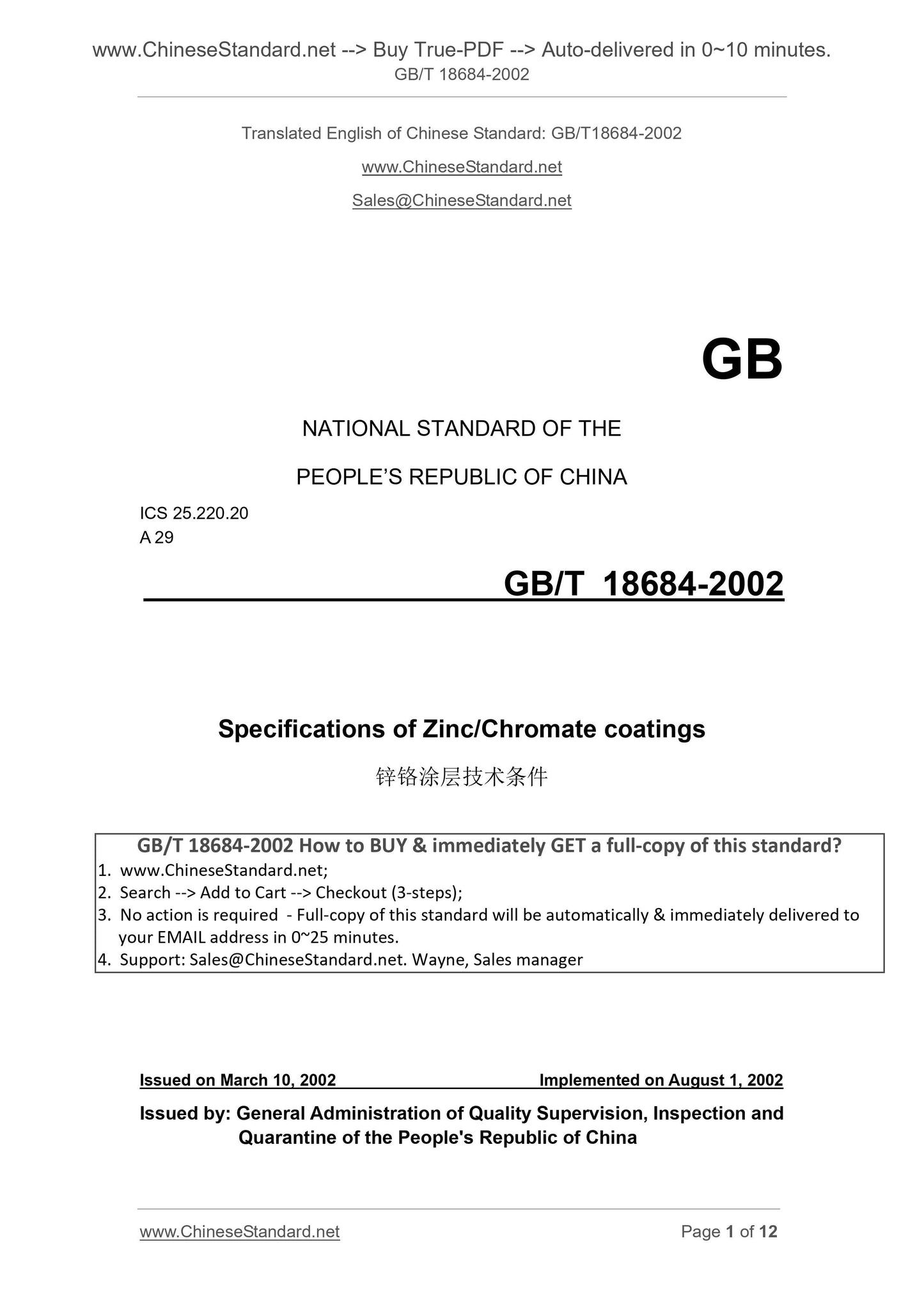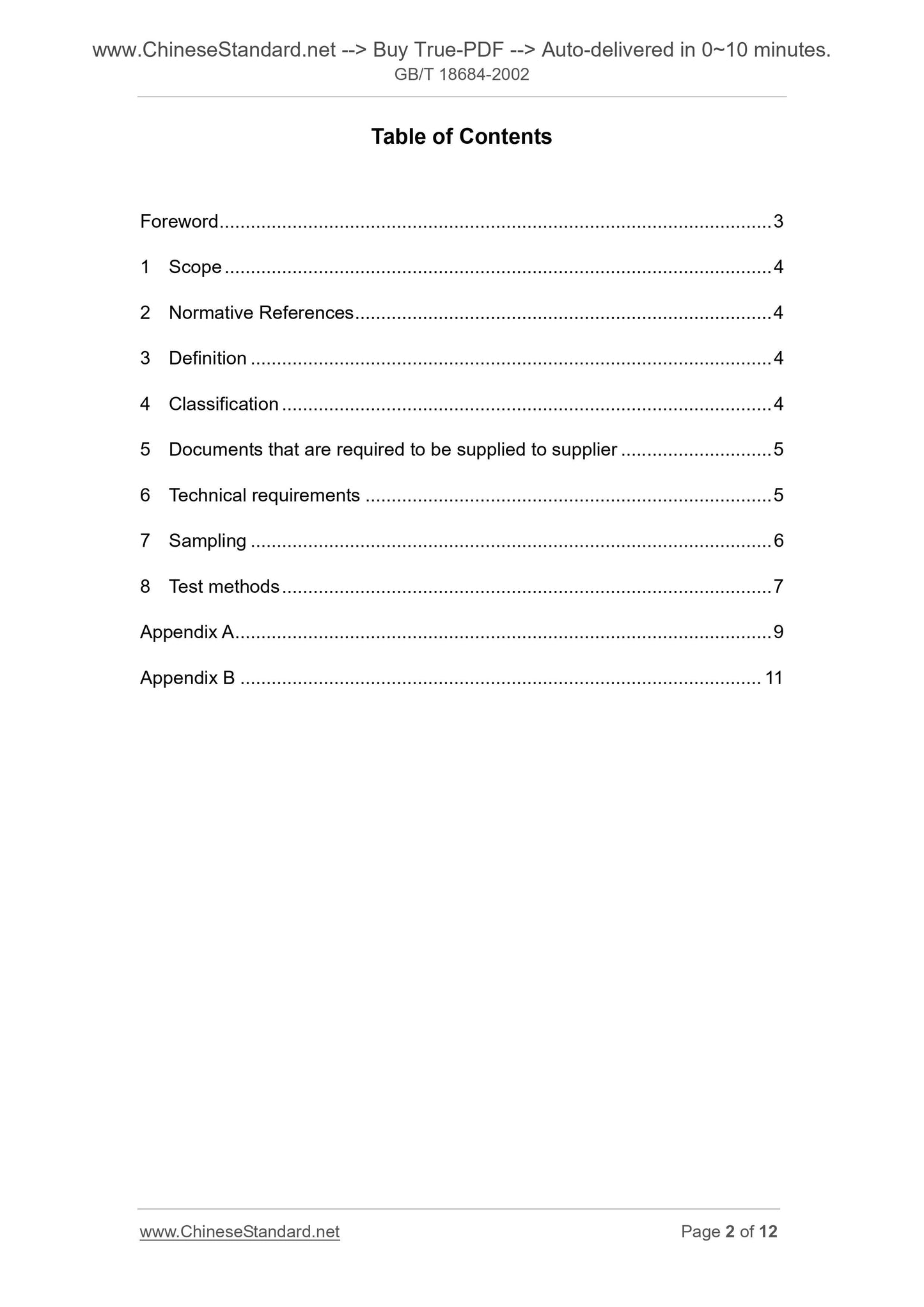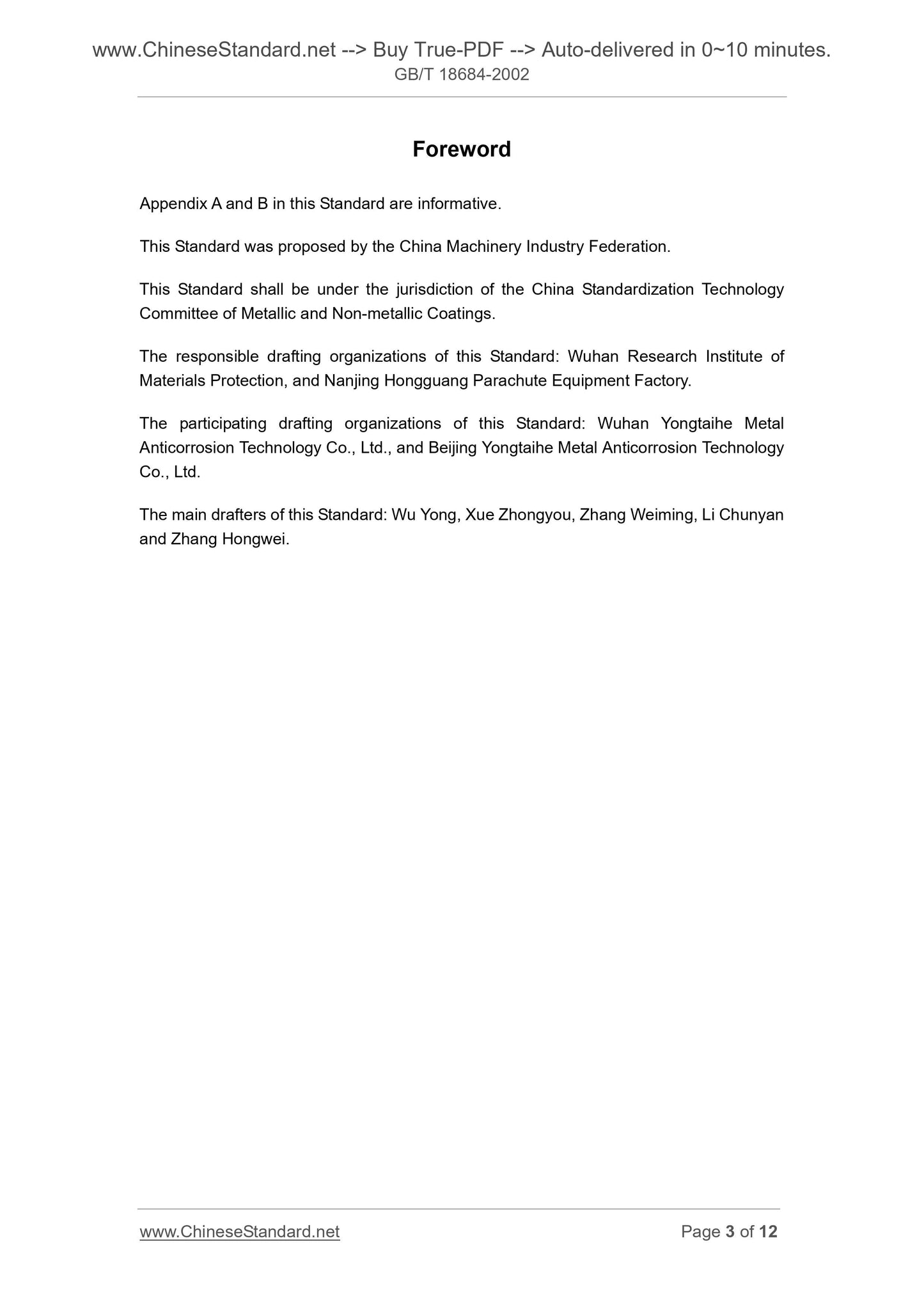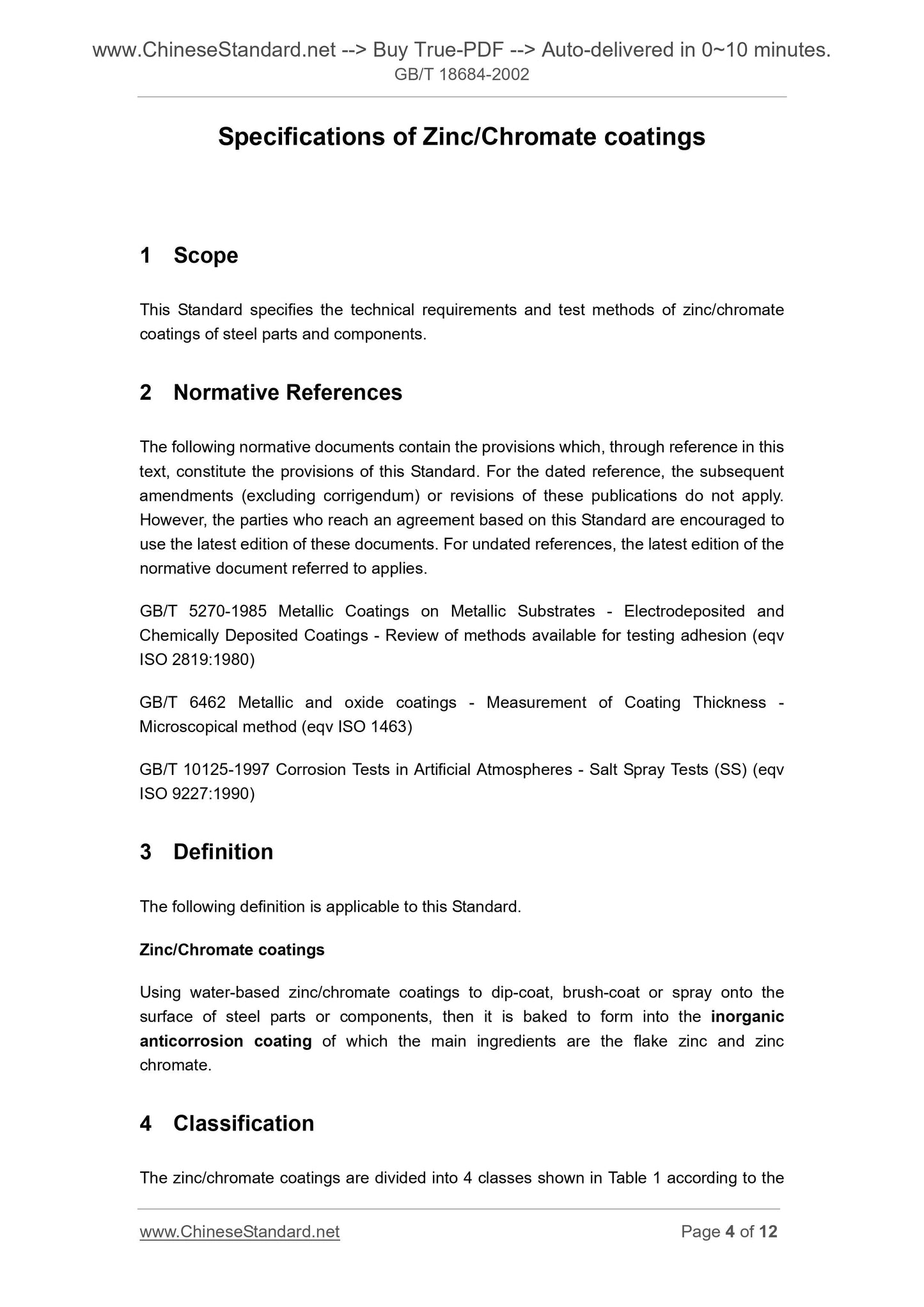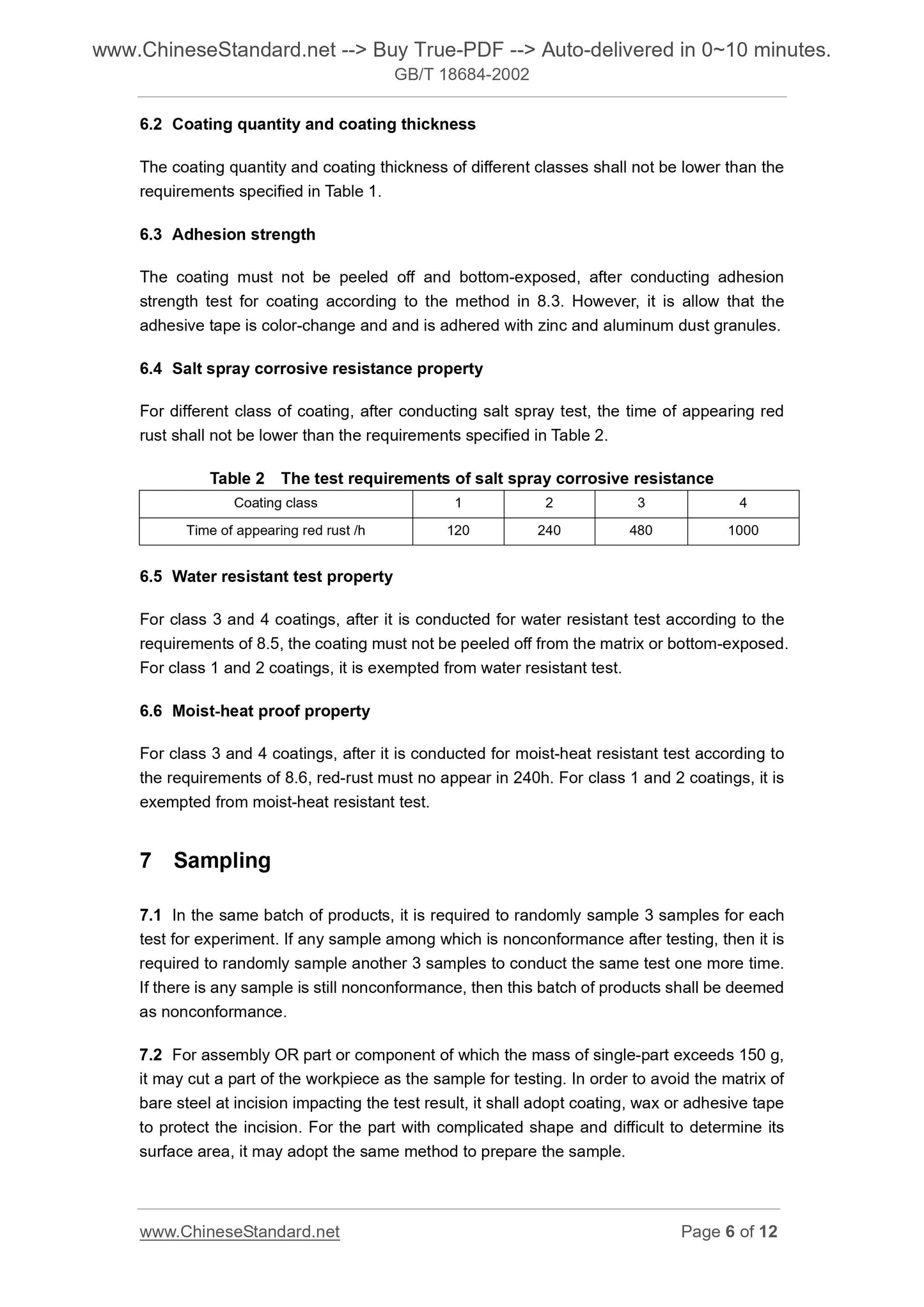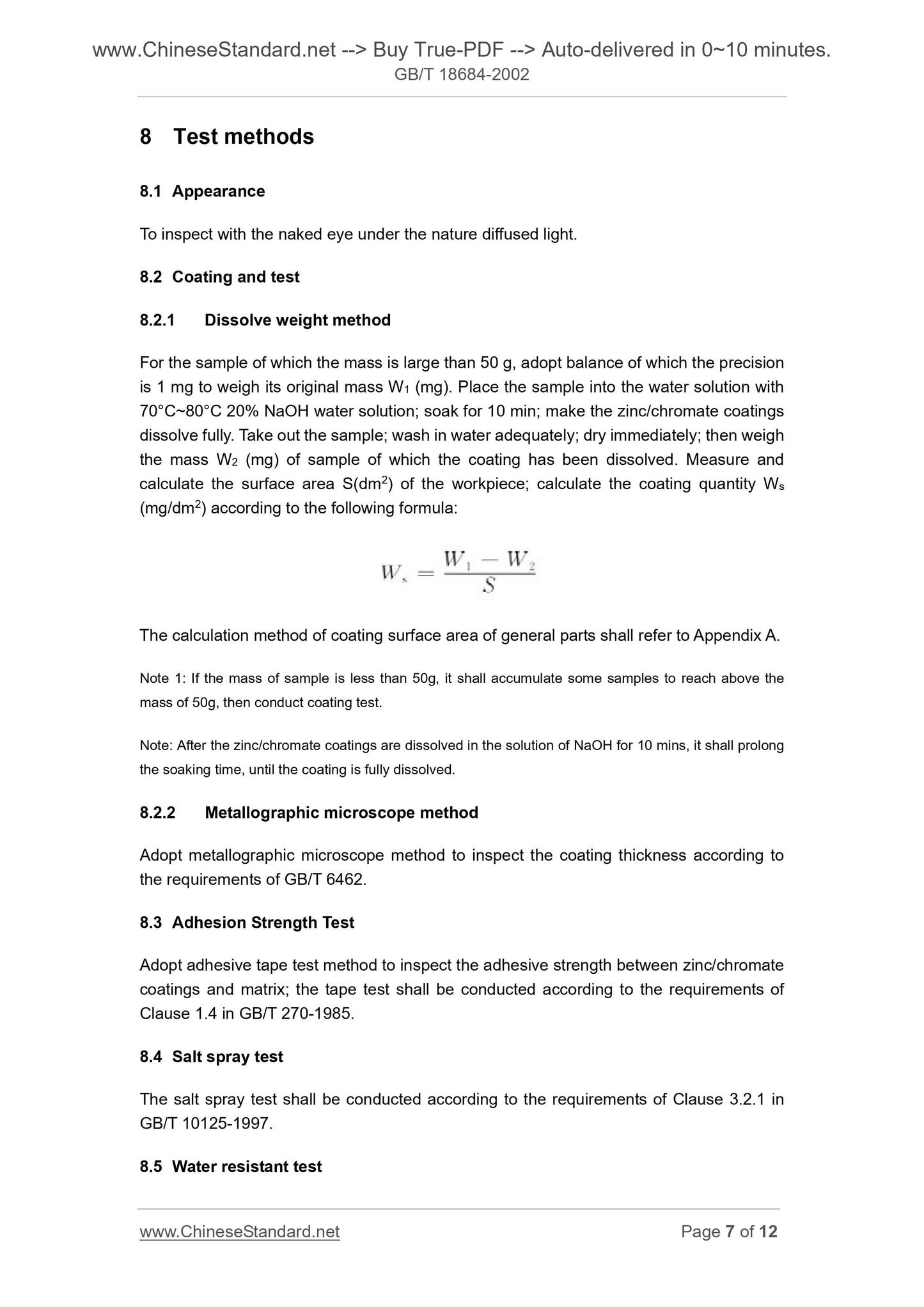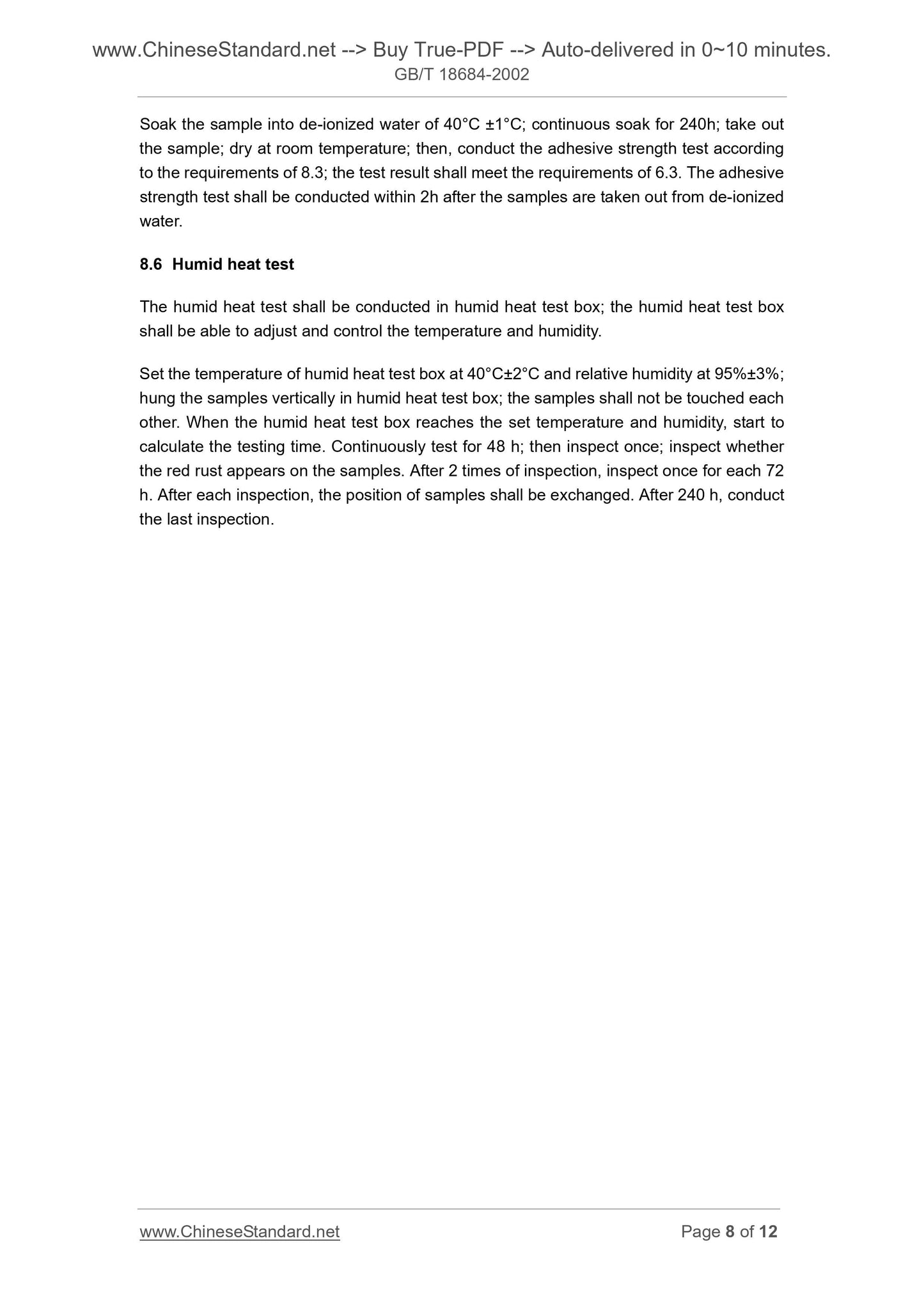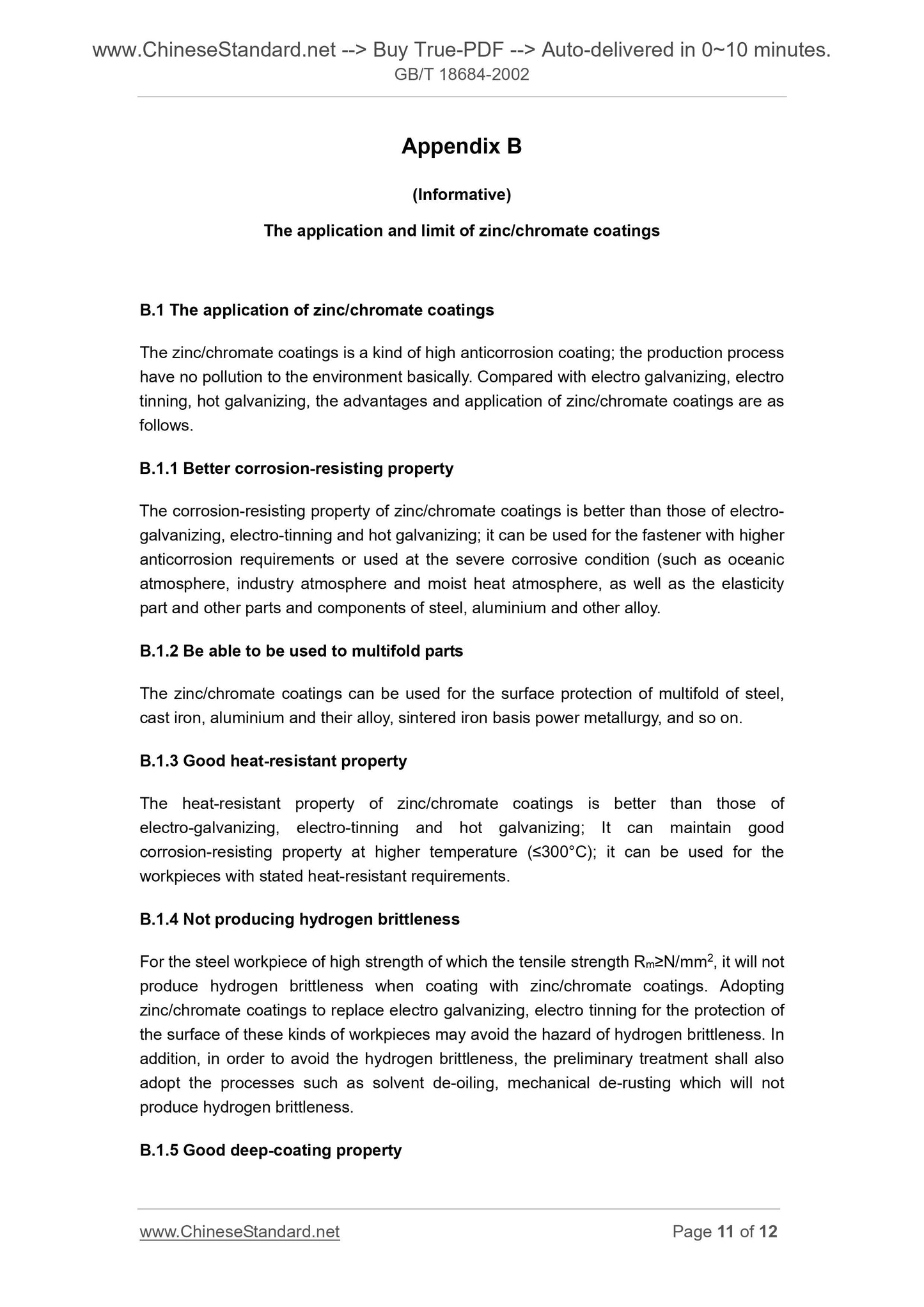1
/
of
8
www.ChineseStandard.us -- Field Test Asia Pte. Ltd.
GB/T 18684-2002 English PDF (GB/T18684-2002)
GB/T 18684-2002 English PDF (GB/T18684-2002)
Regular price
$70.00
Regular price
Sale price
$70.00
Unit price
/
per
Shipping calculated at checkout.
Couldn't load pickup availability
GB/T 18684-2002: Specifications of zinc/chromate coating
Delivery: 9 seconds. Download (and Email) true-PDF + Invoice.Get Quotation: Click GB/T 18684-2002 (Self-service in 1-minute)
Newer / historical versions: GB/T 18684-2002
Preview True-PDF
Scope
This Standard specifies the technical requirements and test methods of zinc/chromatecoatings of steel parts and components.
Basic Data
| Standard ID | GB/T 18684-2002 (GB/T18684-2002) |
| Description (Translated English) | Specifications of zinc/chromate coating |
| Sector / Industry | National Standard (Recommended) |
| Classification of Chinese Standard | A29 |
| Classification of International Standard | 25.220.20 |
| Word Count Estimation | 8,871 |
| Date of Issue | 2002-03-10 |
| Date of Implementation | 2002-08-01 |
| Quoted Standard | GB/T 5270-1985; GB/T 6462; GB/T 10125-1997 |
| Issuing agency(ies) | General Administration of Quality Supervision, Inspection and Quarantine of the People Republic of China |
| Summary | This standard specifies the steel parts, components, zinc chromate coating on the technical requirements and test methods. |
Share
